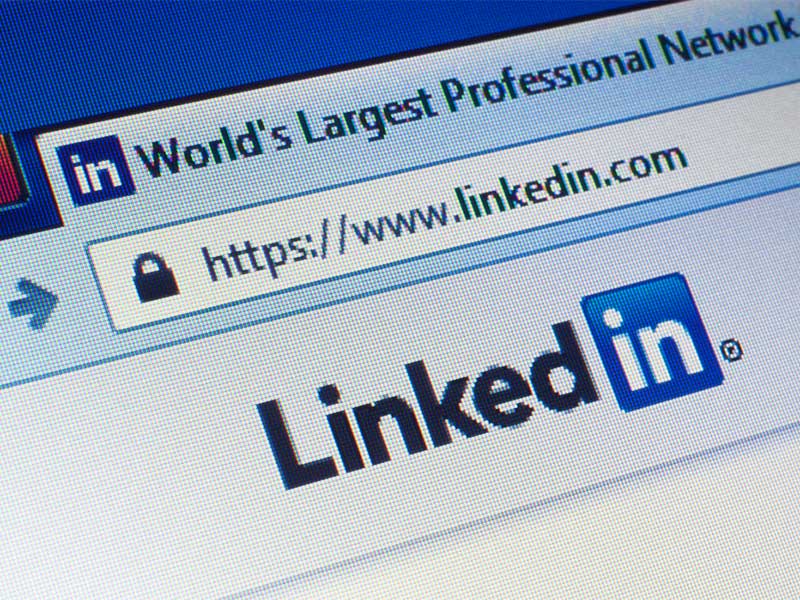According to LinkedIn’s research, 70-85% of job vacancies are never advertised. That figure is likely to be even higher for senior roles. According to some reports, less than 10% of executive-level jobs are filled through advertising on job boards.
The vast majority of senior executives land their new role through networking and personal contacts. If you’re looking for the next step in your career, you’ll get a better ROI from time spent building a professional network and strong personal brand than scrolling through endless online job listings and responding to recruiters’ ads.
Traditional face-to-face networking still plays a huge role. But, senior executives can’t afford to ignore their online presence. And, LinkedIn is the most prominent professional platform. Just take a look at these latest Hootsuite figures:
- At the end of 2018 LinkedIn had 590 million users
- 45% of LinkedIn users are in upper management (Director/VP/C-suite level)
In short, LinkedIn is the premier platform for professional digital brand building because senior leaders and decision-makers congregate there. What’s more, recruiters are now more likely to search on LinkedIn than they are to view bios on company websites.
Yet, senior executives are often sceptical about the benefits of building a digital brand. They often tell us that they don’t get the right opportunities offered to them via LinkedIn.
There are a number of reasons for this. Sometimes it’s simply that recruiters are doing a poor job of matching potential candidates to appropriate roles. But, often it’s because the executives’ LinkedIn profile isn’t working as it should be.
Here are four steps you can take to boost your personal executive brand on LinkedIn.
1. Match your LinkedIn profile to your aspirations
Your profile needs to be a good match for the type of position you’re aiming for. If your next career step is a more senior executive role, or you’re transitioning to a different career path, then you will need to create a profile that convinces readers to see you in that desired position. A fully completed and optimised profile will also attract the attention of executive recruiters.
Your headline and summary section are key to this. Hirers will search LinkedIn and make instant judgements and connection decisions based on a quick view of your profile. They are looking for the closest match possible to the person specification requested by their client. Make sure the main search criteria – experience, location, current position – are quickly and easily visible.
Your headline doesn’t have to be your current or most recent job title. LinkedIn allows 120 characters here, so use them to create a powerful snapshot of your strengths. Using appropriate keywords will significantly increase the odds of people clicking on your profile. And a photo makes your profile seven times more likely to turn up in searches, so it’s worth investing in a professional shot.
You have up to 2,000 characters for your summary section. Use them wisely to tell a keyword-optimised narrative that captures your individuality. You’ll need to highlight your USP and the benefits you bring in a compelling way; keep it concise and clear and write in the first person.
LinkedIn is the perfect showcase for your broad range of skills, expertise and experiences, which means you need to look beyond your job description. Examples of voluntary campaigning, charity trustee experience or industry boards you sit on, give a real sense of your breadth, aspirations and potential. Using specific keywords (the ones recruiters type in when searching for senior executive roles) will make it easier for your profile to be matched with appropriate opportunities.
2. Position yourself as an authoritative expert
Once your profile is polished, keep it current. The best way to do this is to post valuable content. You can share relevant blogs or news articles from third parties to show your interests and potentially foster important connections with other thought leaders.
If you want to showcase your more detailed expertise, you can publish articles on the LinkedIn publishing platform – LinkedIn Pulse. This can boost your presence on the network and establish you as an industry expert. You can also enrich your posts with images and videos of your published work or presentations.
3. Understand the LinkedIn algorithm
The LinkedIn algorithm rates and ranks profiles and posts based on the quality of your account, your network and the content you share. It measures user engagement through the number of likes and shares. Users can also mark your content as spam or hide it from their feeds, so it’s important to ensure the content you share is relevant.
LinkedIn provides analytics to help you see what kind of content your followers are most likely to engage with. You can also access information about your follower demographics and track activity.

4. Join groups and grow your senior executive network.
LinkedIn allows you to create a powerful network and build credibility in your field. Take the opportunity to join industry or professional interest groups and demonstrate your interests by liking, sharing and commenting on other members’ updates. The more connections you have, the higher your LinkedIn ranking and that makes it easier for head-hunters to find you.
When you share articles by or about people and their companies – make sure to tag them in your post. You can do this on LinkedIn as you would on Facebook or Twitter, by using the ‘@’ symbol before their name. This encourages people to share your posts, which will increase your profile views.
Remember, LinkedIn is much more than an online executive CV. It’s a valuable personal branding and networking tool. It’s definitely worth taking the time to ensure you’re using every opportunity it provides to boost your senior executive and non-executive job search strategy.
If you have any questions, or you’d like to know more about how we can improve your LinkedIn profile, give us a call on +44 20 7100 6656 or email us here.

